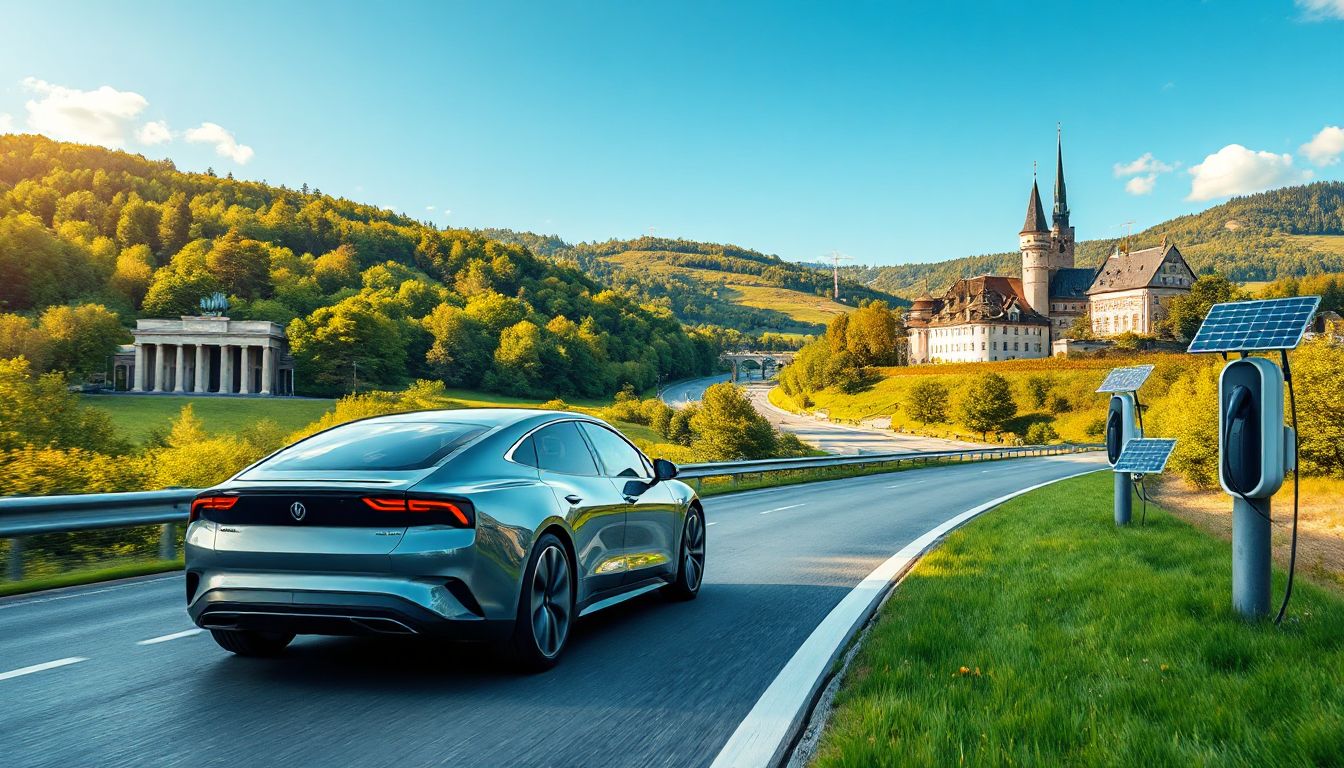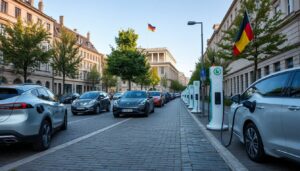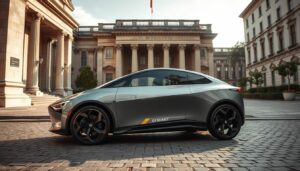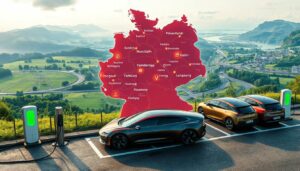Introduction
Germany is quickly becoming a leader in electric vehicle (EV) adoption. The country’s push toward sustainability and clean transportation is clear. To make EV travel smooth and enjoyable, the electric vehicle charging network is expanding fast. With government support and rising EV sales, Germany now has a growing network of charging stations, making it easier than ever to explore in an electric car. Whether you’re planning a scenic road trip or a city visit, knowing where to find charging points is key.
Germany’s Electric Vehicle Market Overview
Germany boasts one of the world’s largest EV markets. Sales are climbing rapidly, with more drivers choosing electric over traditional gas cars each year. Industry estimates show that EVs could make up over 15% of new car sales by 2025. Major manufacturers like Volkswagen, BMW, and Mercedes are leading with innovative electric models. Plus, Germany’s charging providers—Ionity, EnBW, and others—are building a nationwide network to support this shift. The government has also introduced incentives like tax breaks and subsidies, encouraging more people to switch to electric.
Major EV Charging Hubs and Infrastructure in Germany
National Charging Networks
Germany is home to several big charging networks, making long trips easier. Ionity is perhaps the most popular, with fast-charging stations situated along major highways. EnBW and Fastned also service key regions. These networks cover major cities and scenic routes, offering both rapid and regular chargers. Most stations are connected with user-friendly apps and contactless payment options. These features let drivers focus on the journey, not on worrying about compatibility or paying.
Highways and Fast-Charging Corridors
Traveling across Germany? The country’s highway system has plenty of fast-charging stations. Routes like the A8, A9, and the Autobahn are lined with chargers at rest stops and service stations. These fast chargers can refill an EV in under 30 minutes, making long trips more manageable. Planning your route beforehand is a smart move—apps can show real-time availability. With these well-placed stations, range anxiety becomes a thing of the past.
Urban Charging Solutions
Cities are working hard to add more charging spots. Major places like Berlin, Munich, and Hamburg now feature public chargers at shopping centers, parking lots, and busy neighborhoods. Many companies promote workplace charging, allowing employees to recharge while at work. Residential areas are also installing chargers to support home EV owners. Cities are actively increasing the number of urban chargers to keep pace with growing EV demand.
Top Electric Vehicle-Friendly Destinations in Germany
Scenic and Tourist Regions with Charging Facilities
Traveling for fun? Germany’s famous scenic spots are now EV-friendly. In the Black Forest, you’ll find chargers near popular hiking and spa resorts. The Rhine Valley, known for its vineyards and river cruises, has charging stations near boat docks and picturesque towns. The Bavarian Alps offer charging options at mountain lodges and ski resorts, perfect for exploring these stunning landscapes sustainably.
Eco-Friendly Cities and Their Initiatives
Germany’s cities are leading by example. Berlin has a network of EV hubs, along with policies to promote green transport. Munich offers extensive public charging and car-sharing programs, reducing the need for private car use. Hamburg stands out with waterfront charging stations that blend into the urban landscape. These cities showcase how sustainability can merge with modern urban life.
Cultural and Historic Sites with Charging Amenities
Many historic sites now cater to EV drivers. Dresden’s old town and historic districts feature charging points nearby. Heidelberg Castle, a symbol of Germany’s past, has accessible EV stations within reach. UNESCO sites like Lübeck, with its medieval architecture, are also encouraging electric travel. These spots prove you can enjoy Germany’s rich history while keeping your carbon footprint low.
Practical Tips for EV Travel in Germany
Planning is key when going on an EV trip. Use apps like PlugShare or ChargePoint to find the nearest chargers. Check station availability ahead of time to reduce wait times. Understand charging standards—most German stations use CCS or Type2 connectors—and know your payment options, whether via app or card. When charging in cities, look for designated parking spots and avoid busy times to get the most out of your stops. Rural charging can be limited, so map out your route carefully.
Future Outlook and Developments in Germany’s EV Infrastructure
Germany isn’t stopping now. The government is investing heavily in new charging projects, aiming to add thousands more stations over the next few years. Innovations like ultra-fast chargers and smarter battery management are on the horizon. The country also envisions integrating electric vehicles with smart grids and autonomous driving, paving the way for the future of transportation. Germany’s goal is to achieve climate neutrality by 2045, and expanding EV infrastructure is critical to meet that aim.
Conclusion
Germany is making it easy to go electric with a robust charging network and scenic destinations. From mountain resorts to historic towns, EV-friendly routes are growing fast. Planning ahead is simpler than ever with smart apps and reliable stations. As Germany continues to invest in clean transport, exploring its beautiful landscapes and cities in an electric vehicle becomes a joyful, sustainable experience. So, why not plan your next trip on the green side? Discover Germany’s EV routes and turn your travel into an eco-friendly adventure.




